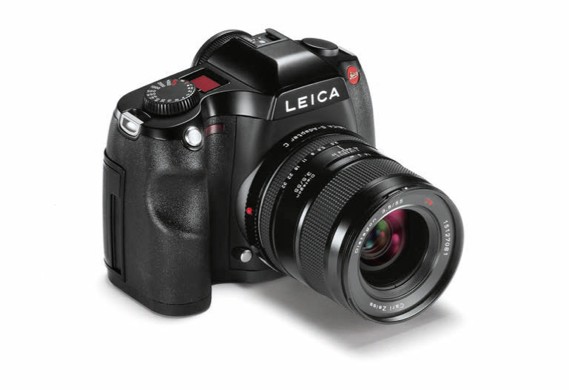Contax 645 lenses on Leica S medium format cameras? While this is not something new, for some it may prove useful indeed. The thing is, most people who are contemplating to get into Medium Format hardly consider Leica S as an affordable option. In a way they are right, as Leica has never been associated with a word “affordable”, yet it is not that simple…

The first time I tried Leica S2 back in 2009, I fell in love with it. Certainly, not fully Medium Format of the past, but large enough frame to have its unmistakeable three-dimensional look. The beauty of Leica S cameras is in how small they are compared to the competition. In fact, all Leica S AF-series camera bodies are no larger than professional 35-mm bodies from Canon and Nikon, while all other digital medium format systems simply inherited film bodies retrofitted with either digital backs, or built-in sensors.

My previous Medium Format system that had served me beautifully for ten years, until I switched to Leica S-E (Typ006), had been Contax 645AF/PhaseOneP25 combo. The most advanced and forward-thinking system of its time, it is still going strong. However, Contax 645 cameras have become dangerous to use professionally, as they have not been produced and serviced since 2005. That was a real shame, as the system abandoned by its manufacturer (Kyocera, shame on you) featured some of the best lenses in the Medium Format category. Unexpectedly, Leica came to rescue. Realizing that exuberant prices of its lenses Leica top management came up with a clever and elegant solution: the S system came out with a host of lens adaptors including the S-adapter-C, an electronic adapter, which enables use of all capabilities of the Contax 645 AF lenses on Leica S camera bodies.
So, why the Contax 645 AF lenses? The short answer is simple: currently they offer the best price/performance ratio in the industry. Now, the long answer:
- Made by Carl Zeiss, Contax 645AF lens lineup consists of 3.5/35, 2.8/45, 3.5/55, 2/80, 4/120 APO Macro, 2.8/140, 4/210 and 4/350 APO, not to mention a 4/45-90 zoom. This collection of focal lengths will satisfy any photographic need within the Medium Format category.
- Image quality is superb: Medium Format optics is the Carl Zeiss’ core competency. In fact, these lenses are so good that most of them do not require image correction, hence no Lightroom profiles needed.
- Proprietary 7-layer T* coating makes all Carl Zeiss lenses incredibly resistant to flare and glare, and Contax 645 optics is no exception.
- Contax 645 lenses are optimized for the 60mm image circle. Leica S sensors have a 45mm diagonal, and it is there these lenses have the highest resolution.
- Ergonomics is on par with image quality. 55mm, 80mm, 120mm, 140mm and 210mm lenses all have the same barrel diameter and 72mm filter size. This is incredibly convenient.
- Mounted on Leica S 006 and 007 bodies these lenses autofocus noticeably faster than on the Contax 645 body.
- Even though the S-adapter-C is expensive, its price is easily justified by the fact that three lenses 2.8/45, 3.5/55 и 2.8/140 (used, of course, but in excellent condition) together cost less than the standard Leica Summarit-S 2.5/70 ASPH.
- Contax 645 lenses are readily available on eBay, and their prices are comparable to what one would pay for repair should the lens fail or get dropped.
Any conversation about image quality without visual evidence would be pointless. So, be your eyes the judge.
3.5/35 is probably the only lens that does not hold to Leica’s standards for wide-angle lenses. While it is sharp, it does require correction, and Lightroom has a profile for it.

2.8/45 is very sharp and distortion-free.

3.5/55 has a unique look. It manages to make both front and background OOF areas look similarly pleasing. This is not something many lenses can do. Its rendering has a pronounced illusion of depth, just play the time-lapse below.

Leica S-E (Typ006), Carl Zeiss Distagon 2.8/55 T*
2/80 is one of the fastest lenses in Medium Format, and despite its high speed, there is no compromise in image quality. Note zero longitudinal chromatic aberration in the OOF area on the image below.

4/120 APO Makro-Planar is unbeatable. Unlike its Leica competitor, it delivers 1:1 magnification and stops down to f/45. It is a manual focus lens, but who needs AF on a Medium Format macro lens, seriously? Images shot with this lens look absolutely real, which makes it my one and only choice for high-end food photography.

The rest of the lineup, in my opinion, rivals Leica lenses of similar focal lengths in all possible ways. Just look at the example below. This image is unedited.

Now, why Leica S-E? As the time of writing Fuji is selling two Medium Format mirrorless cameras that accept Contax 645 lenses via a dedicated adapter. They are both great, but not as fast as may Leica S-E and even less so than Leica S Typ007. Conceived with fashion photographers in mind, Leica S cameras are certainly not as fast as 35mm pro sports bodies, but fast enough to catch some fast action, even non-posed. Planar 2/80 wide open has depth of field comparable to 0.95/50 Noctilux on a 24x36mm frame, yet Leica S-E AF speed and precision are within acceptable limits for print work (below).

While Leica SL made me a strong proponent of the mirrorless technology, Leica S DSLR system is at this point 100% relevant, and when equipped with Contax 645 Carl Zeiss optics represents a relatively affordable professional solution delivering superlative image quality.
Irakly Shanidze © 2019

You must be logged in to post a comment.